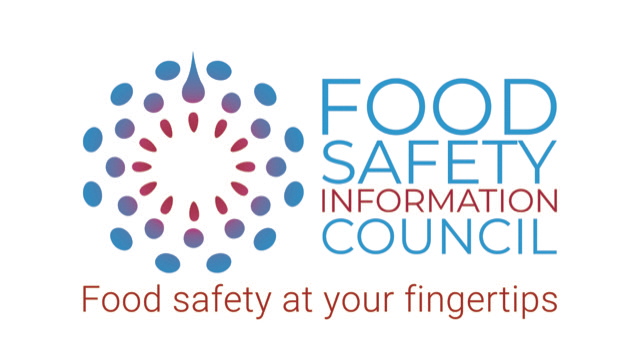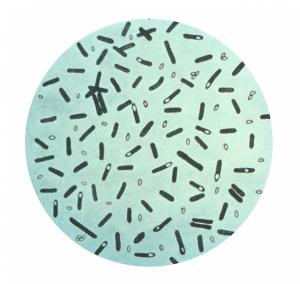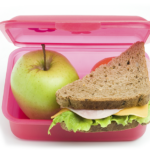Our Science
The Food Safety Information Council uses scientific and social research as evidence for its educational work.
We draw on the expertise of our members which include state and territory health and food safety agencies, local government, and leading professional, industry and community organisations.
Research
As part of its educational activities, the Food Safety Information Council has carried out consumer research into food safety knowledge. It also publicizes the results of food-related research. For example, a study by Food Standards Australia New Zealand and the Australian National University in 2022 estimated 4.67 million cases of food poisoning in Australia each year that result in 47,900 hospitalisations, 38 deaths and cost to the economy of $2.1 billion. The main causes were Norovirus, pathogenic Escherichia coli, Campylobacter spp. and non-typhoidal Salmonella spp., although the causes of approximately 80% of illnesses were unknown. A question and answer fact sheet published by the Australian Department of Health together with this study references the Food Safety Information Council’s consumer advice as a means of reducing food borne disease[13] Most foodborne disease outbreaks in Australia have been linked to raw or minimally cooked eggs or poultry. The Food Safety Information Council estimates that one third of cases of food poisoning occur in the home
Handwashing
Omnipoll national research for Global Handwashing Day in October 2020 found there was no major increase in Australians washing their hands since the same time last year. As handwashing was a major component of the national campaign to reduce the risk of catching COVID-19, this lack of improvement was a considerable surprise.
The greatest improvement was a 4% increase in the number of people who said they always wash their hands after going to the toilet (up from 79% to 83%) but that still means almost 1 in 5 Australians don’t always adhere to this most basic of hygiene messages.The research indicated that more people are putting themselves at risk of food poisoning, as there was a 5% drop in the number of respondents (from 63% to 58%) always washing their hands before handling food. Men were less likely than women to always wash hands after going to the toilet (80% of men versus 85% of women) and before touching food (53% of men versus 62% women). This 2020 survey also asked how often people washed their hands and used hand sanitiser on the previous day. While 1 in 5 people couldn’t recall how often, the others reported that they washed their hands an average of 7.5 times a day and sanitised them 3.9 times a day. There was also a strong correlation between people’s use of hand sanitiser and concerns about catching COVID-19.
Previous consumer research, released in October 2019, found that more than 20% of Australians admitted that they didn’t always wash their hand after going to the toilet and nearly 40% of respondents also admitted that they didn’t always wash their hands before touching food. A further 43% of Australian adults say they don’t always wash their hands after handing raw eggs The research showed gender differences as men were less likely than women to always wash hands after going to the toilet (76% of men versus 82% of women) and before touching food (59% men versus 66% women). Young people were less likely than older age groups to always wash their hands after going to the toilet (69% under 34 years versus 86% over 50 years) and before touching food (59% under 34 versus 63% over 50).
A 2007 study found that 97 per cent of Australians knew that washing their hands before handling food is essential, this compared with 54 per cent who didn’t wash their hands in 1997 – a 43 per cent improvement.
Eggs
National Omnipoll research released in November 2019 showed that one in four Australian adults were taking a food safety risk by eating raw or undercooked egg dishes and 12% of them eat them at least monthly. Salmonella infection is a common type of food poisoning in Australia and eggs can be contaminated by Salmonella on the outside of the eggshell as they are laid or sometime later. In rare cases, Salmonella can enter eggs when they are being formed in the chicken. Cooking is an effective way to kill all types of Salmonella, however, an increasing number of people are consuming undercooked and raw eggs and egg dishes and this trend is increasing.
Chicken
A 2012 chicken meat study found 60% of home cooks were at risk of food poisoning by washing whole poultry before it was cooked, which can spread bacteria around the kitchen. A further 16% of those surveyed incorrectly tasted chicken to see if it was cooked properly rather than using a safe meat thermometer.
Date marking and cooking/storage instructions
A 2013 labelling survey found just over half (55%) of those surveyed always read and comply with ‘use by’ dates and less than half (45%) always read and comply with ‘best before’ dates. Only a third (33%) of people always read and comply with storage instructions and a meager 14% always read and comply with cooking instructions.
Lunch boxes
A 2012 lunchbox survey found almost 80 per cent of adults take a packed lunch to work, yet many fail to make sure it’s kept cool. About 17 per cent admitted they made no effort to put their lunch in a fridge at work, and 29 per cent don’t put them in coolers even if they’re working outside.
Food safety risks
An October 2015 national Australian survey by OmniPoll for Australian Food Safety Week found that 71% of those Australians surveyed blamed pasteurized milk for food poisoning while 83% identified raw egg dishes as a problem and 12% even considered raw egg dishes unlikely to be a risk. The survey found that most people correctly recognised that chicken (95%), minced meat (90%) and seafood (96%) were food poisoning risks if not handled properly.
Cooking temperatures for riskier foods
An October 2016 national Australian survey by OmniPoll for Australian Food Safety Week 2017[26] showed that 70% of those surveyed reported that they didn’t know the safe cooking temperature for foods high-risk foods such as hamburgers, sausages and poultry. Of those that reported they did know the correct temperature, most were wrong with 15% saying below the safe temperature of 75°C and 9% stating it should be 100°C or more.
Listeria
2018 Omnipoll research that shows that one in three Australians are either at risk of getting the potentially fatal Listeria infection themselves or live in a household with someone at risk. This research also showed a third of these people who are at risk, or living with someone at risk, had never heard or Listeria infection and two in ten of these couldn’t name any of the foods they needed to avoid or cook to prevent Listeria infection
Here are some examples of the scientific and social research we use:
Food Standards Australia New Zealand 2022 Australian National University Annual Cost of foodborne illness in Australia 2022
Australian Government. Department of Health. 2020. The effect of COVID-19 public health measures on nationally notifiable diseases in Australia: preliminary analysis Communicable Diseases Intelligence v 44 pp1-16.
Environment and Health International v21 Issue 1 Dec 2021 Food safety it’s in your hands Handwashing research
NSW Food Authority 2009 Lunch Box food safety study
Ozfoodnet A health network to enhance the surveillance of foodborne diseases in Australia
Food safety scientists save lives – check out the international experts including our very own Dr Trish Desmarchelier




